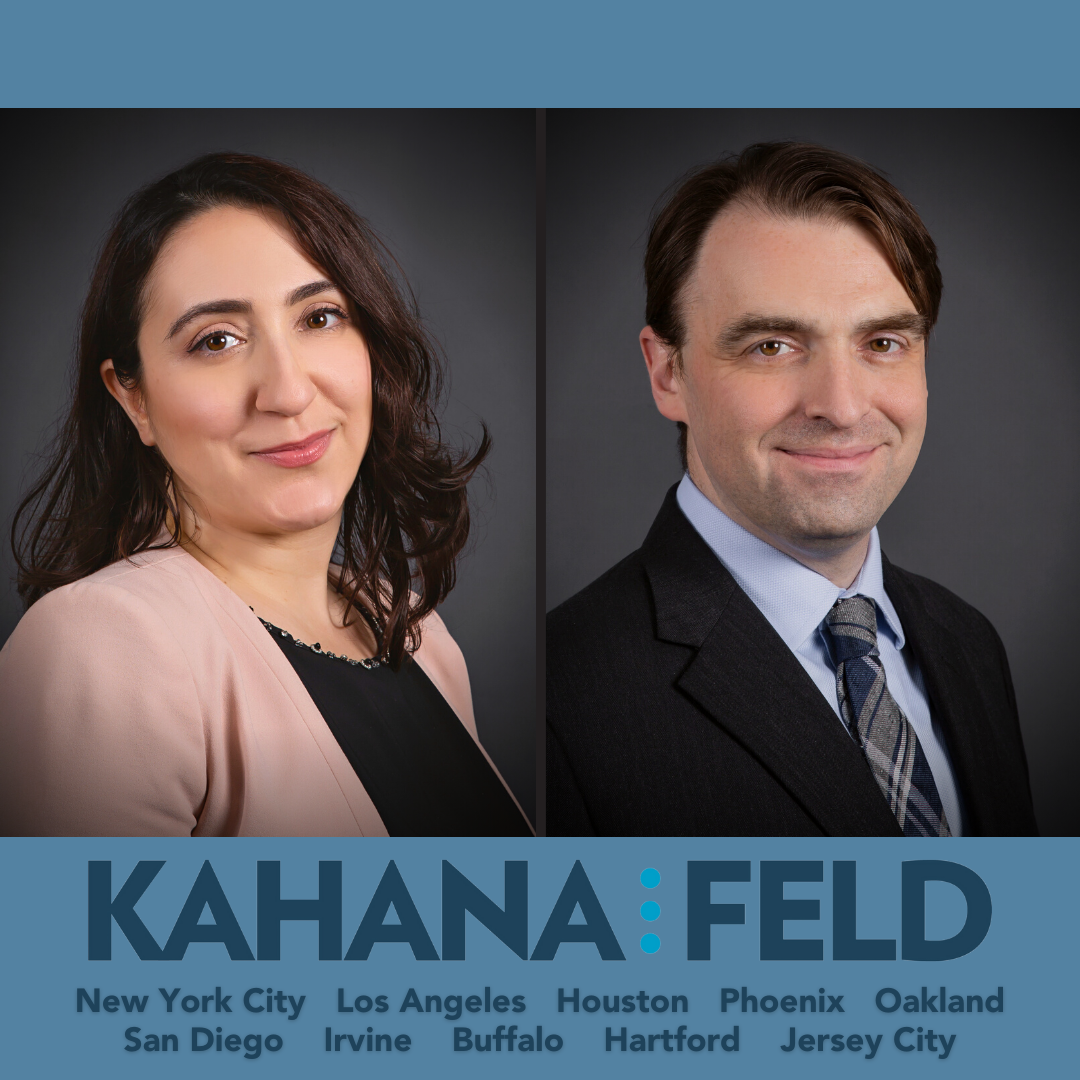Posted In National Appellate Litigation & Consulting Group
Authored and researched by Tim Capowski, John F. Watkins, and Kharis Lund with assistance from former colleague(s).
The first two parts of this series discussed the role of certain tactics and improper summation techniques and what the defense bar and the judiciary can and should do to curb these abuses and restore sane, predictable, compensatory justice to the tort system. This third and last part turns outside the courtroom itself to the broader culture that enables these abuses.
As waves of nuclear and excessive verdicts have crashed on the shores of our civil litigation system over the past decade, there have been efforts to understand, label, and prevent them from recurring. The need to understand and arrest this troubling development has assumed an added sense of urgency as New York State buckles under the weight of increasing taxes,[i] the highest tort costs per household,[ii] the exorbitant cost of living,[iii] the highest taxpayer exodus,[iv] and the devastating financial impact of COVID-19.[v] The rise of nuclear and excessive verdicts is attributable to many factors, including increased litigiousness, rising economic inequality, shifting appreciations for the value of money, anti-corporate animus, and the plaintiff bar’s success in employing innovative tactics to exploit this milieu, especially with regard to the component of pain and suffering. In the first two parts of this series, we discussed the role of these tactics and improper summation techniques that we broadly classed under the umbrella “How Dare They Defend?” or “HDTD” and what the defense bar and the judiciary respectively can and should do to curb these abuses and restore sane, predictable, compensatory justice to the tort system.[vi] Now in this third part, we turn outside the courtroom itself to the broader culture that enables these abuses.
The legal industry’s own role in fanning the flames has been a critical, but underappreciated, piece of the puzzle. Year after year, legal publications and websites around the country lionize nuclear verdicts through annual lists of Top Verdicts. There’s even a website devoted exclusively to this task.[vii] The plaintiff firms that generate these nuclear verdicts are feted by the Bar as if this were a good thing.
Deifying these verdicts fuels the upward spiral of verdicts by encouraging an arms race amongst plaintiffs’ lawyers while incrementally normalizing otherwise outlandish awards. Simply stated, the time has come to recalibrate the messaging surrounding nuclear verdicts. Bigger, in this case, is not better. Instead, these verdicts should be seen for what they are: an affront to the orderly administration of justice.
Absent a fundamental shift in attitudes, the strategies offered in parts one (https://www.law.com/newyorklawjournal/2020/07/13/ahead-to-the-past-the-evolution-of-new-rules-of- engagement-in-the-age-of-social-inflation-and-nuclear-verdicts/) and two (https://www.law.com/newyorklawjournal/2020/07/20/ahead-to-the-past-part-ii-of-iii-the-evolution-of-new- rules-of-engagement-in-the-age-of-social-inflation-and-nuclear-verdicts-currently-existing-tools-for-the-new-york-bench-and-bar-to-repair-the/?LikelyCookieIssue=true) of our series can only achieve success on a partial or case by case basis. But the true path to stemming the tide of nuclear verdicts lies in reshaping the legal culture across the board. As renowned management consultant Peter Drucker famously observed, “Culture eats strategy for breakfast.”
Just Compensation
As we discussed in part two (https://www.law.com/newyorklawjournal/2020/07/20/ahead-to-the-past-part-ii- of-iii-the-evolution-of-new-rules-of-engagement-in-the-age-of-social-inflation-and-nuclear-verdicts-currently- existing-tools-for-the-new-york-bench-and-bar-to-repair-the/) of this series, the Court of Appeals has long held “[t]hat an award of damages to a person injured by the negligence of another is to compensate the victim, not to punish the wrongdoer.”[viii] The goal is to ensure that the plaintiff receives “just compensation commensurate with the injury sustained”[ix] while recognizing that recovery of damages for pain and suffering and loss of enjoyment of life constitutes a “legal fiction.”[x] New York law, through the legislative compromise of CPLR 5501(c), provides a mechanism for fixing the figure required to fairly compensate a plaintiff for his or her injuries. Critically, the statute effectively imposes a $10 million cap on pain and suffering awards, with just two appellate reviewed cases ever crossing this threshold.[xi]
Perpetuating A Problem
Nuclear verdicts flout these basic precepts of New York law. Rather than provide just compensation, they are thinly veiled efforts to punish the defendant that are nearly always awarded at the specific request of plaintiff’s counsel,[xii] and nearly always accompanied by an invocation of several improper themes for jury consideration.[xiii] Nuclear verdicts never stand and exact a steep price. The parties expend substantial resources on post-trial motion practice, bonds and associated motion practice, and appeals. As a consequence, plaintiffs often wait years to receive their just compensation, and defendants are charged with 9% interest. The courts commit precious resources to deciding these motions and appeals, adding further burdens to an already overworked and underfunded system. The average New Yorker feels the pain too.
Nuclear verdicts (and routinely excessive verdicts) drive insurers from the market and increase premiums. The twin pressures of decreasing competition and increased insurance costs are ultimately passed through to the consumer. This is the same consumer and taxpayer who was leaving New York at a higher rate than any of the 50 states even before COVID-19.
“Words Matter”[xiv]
Despite the restraints imposed on pain and suffering awards and the deleterious consequences of nuclear verdicts, the Bar routinely exalts these verdicts—and, implicitly, the tactics that generate them—that blatantly defy CPLR 5501(c)’s strictures.[xv] This serves as incredibly positive advertising for the plaintiff firms whose verdicts make the list. Indeed, these firms post such articles and list such verdicts with pride on their websites proclaiming “hundreds of millions” or “over a billion” dollars in “recoveries.”[xvi]
The veneration of these verdicts in articles, lists, and websites creates the impression that extravagant awards are the norm, but this is an incomplete and misleading picture. Our group has collected and analyzed data to highlight some of the serious structural problems ailing civil litigation in New York State courts. Most notably, we published a study based on a decade of nuclear verdicts in New York to demonstrate the pernicious problem of improper summation anchoring.[xvii] A key finding was this: these “top verdicts” that are celebrated each year are fictitious, and reduced to a mere fraction of the amount via settlement or Appellate Division remittitur. That is to say, these bloated verdicts are entirely illusory and do not accurately reflect the true value of claims in New York.
Changing the Narrative
Courts have long recognized that litigation is a “search for the truth rather than a sporting contest.”[xviii] Lauding nuclear verdicts, which are always resolved for a fraction thereof, fosters the culture of gamesmanship that is antithetical to the basic tenets of our judicial system. It is difficult to conjure up another scenario where the legal industry would heap praise on temporary verdicts that were so sharply at odds with the law. Surely the industry would not praise lengthy prison sentences that were obtained through prosecutorial misconduct or defense verdicts in civil actions that owed to discovery violations. While these analogies are not perfect, they are illustrative insofar as nuclear verdicts, like prosecutorial misconduct and civil discovery violations, inevitably involve breaches of well-settled rules that are designed to promote fundamental fairness.
Unfortunately, there is no magic formula for shifting the current culture surrounding nuclear verdicts. But there are some basic common-sense steps that the industry should take to address the problem. First, as with any issue, the Bar must recognize that nuclear verdicts are a problem, and that the current narrative around these awards is perpetuating the problem. A problem cannot be resolved until it is acknowledged. [xix]
Second, after acknowledging the problem, it is important to consider how nuclear verdicts are portrayed in the industry. As evidenced by the lists of top verdicts, they are admired, honored, and treated as an accomplishment indicative of superior lawyering. Rather than framing these awards as a mark of excellence or high achievement to be emulated, nuclear verdicts should be cast in terms of a systemic failure, an overstepping by counsel, and/or a jury mistake that must be corrected. In other words, a nuclear verdict should not be celebrated, but instead treated as an aberration that adversely impacts the litigants, the courts, and society.
Third, and perhaps most importantly, the Bar should ensure that greater context is provided for nuclear verdicts. While lists collecting top verdicts are unlikely to disappear, they should be accompanied by additional information that allows the reader to better appreciate what the award actually means. Along these lines, greater efforts should be made to catalogue and publicize how these top verdicts are ultimately resolved. This involves follow-up articles and data collection surrounding settlements and remittiturs as well as the creation of an annual list detailing the top verdict reductions; projects that our group has already begun to undertake. Publishing additional data will help reshape the dialogue around nuclear verdicts by illustrating that these awards are fleeting anomalies that represent a failure in the system or a manipulation of the system, rather than a triumph of justice.
Nuclear verdicts serve no purpose – let’s stop celebrating them.
Initially published by NYLJ.
ENDNOTES:
[i] Adam McCan, Tax Burden by State, WALLET HUB (Apr 2, 2019), https://wallethub.com/edu/states-with- highest-lowest-tax-burden/20494/#main-findings. [ii] Paul Hinton et al., Costs and Compensation, U.S. CHAMBER INSTITUTE FOR LEGAL REFORM 1, 4, 23, 26 (Oct. 2018), https://www.instituteforlegalreform.com/uploads/sites/1/Tort_costs_paper_FINAL_WEB.pdf.]iii] Cost of Living by State 2020, WORLD POPULATION REV. (2020), https://worldpopulationreview.com/states/cost-of-living-index-by-state/.
[iv] 2019 U.S. Population Estimates Continue to Show the Nation’s Growth Is Slowing, UNITED STATES CENSUS BUREAU (Dec. 30, 2019), https://www.census.gov/newsroom/press-releases/2019/popest- nation.html#:~:text=The%2010%20states%20that%20lost,(%2D369%20%3B%20%2D0.1%25); see also Jimmy Vielkind et al., N.Y., NJ Governors Blame Shrinking Revenue on Federal Tax Changes, WALL ST. J. (Feb. 5, 2019, 9:47 AM), https://www.wsj.com/articles/ny-nj-governors-blame-shrinking-revenue-on-federal-tax-changes-11549321915. [v] See Jimmy Vielkind, New York Municipalities Feel the Budget Crunch as Coronavirus Pandemic Squeezes Funding, WALL ST. J. (July 6, 2020, 3:42 PM), https://www.wsj.com/articles/new-york-municipalities-feel- budget-crunch-as-coronavirus-pandemic-squeezes-funding-11594027800?st=om0pgaurjvnj0tl&reflink=article_email_share; Prashant Gopal, NYC Rental Market Pushed to Breaking Point by Tenant Debts, BLOOMBERG QUINT (July 8, 2020, 2:30 PM), https://www.bloombergquint.com/businessweek/coronavirus-moves-nyc-affordable-housing-crisis-to- breaking-point; Luis Ferré-Sadurní & Jeffery C. Mays, Outbreak Ravages N.Y. Budget; Governor Calls Aid Deal ‘Terrible’ for State, N.Y. TIMES (Mar. 26, 2020), https://www.nytimes.com/2020/03/26/nyregion/coronavirus- recession-economy-ny.html; Shawn Tully, New York City’s lockdown is costing $173 million per day. Is it still worth it?, FORTUNE MEDIA (June 6, 2020, 7:00 AM), https://fortune.com/2020/06/06/new-york-city-nyc- lockdown-cost-economy-coronavirus/; Chelsea Diana, The economic impact of Covid-19 in New York state by the numbers, ALBANY BUS. R. (June 8, 2020, 6:00 AM), https://www.bizjournals.com/albany/news/2020/06/08/new-york-economic-impact-of-covid-19.html; J. David Goodman, ‘I Don’t Think the New York That We Left Will Be Back for Some Years’, N.Y. TIMES (Apr. 20, 2020), https://www.nytimes.com/2020/04/20/nyregion/new-york-economy-coronavirus.html; Jonathan Bowles & Charles Shaviro, A Blow to the Boroughs: Many Industries Hit Hardest by Coronavirus Concentrated Outside Manhattan, CTR. FOR AN URBAN FUTURE (Mar. 2020), https://nycfuture.org/research/a-blow-to-the- boroughs; Margaret Besheer, As New York Looks to Heal From Coronavirus, Its Economy Falls Ill, VOICE OF AM. (Apr. 16, 2020, 6:35 PM), https://www.voanews.com/covid-19-pandemic/new-york-looks-heal- coronavirus-its-economy-falls-ill; Robert Pozarycki, ‘No silver bullet’ to solve New York’s $8.7B budget deficit, 22% unemployment: Stringer, AMNY (May 2020), https://www.amny.com/coronavirus/no-silver-bullet-to- solve-new-yorks-8-7b-budget-deficit-22-unemployment-stringer/.Carl Campanile & Bernadette Hogan, New York lawmakers eye distance voting amid coronavirus pandemic, N.Y. POST (Mar. 28, 2020, 5:20 PM), https://nypost.com/2020/03/28/new-york-lawmakers-eye-distance-voting-amid-coronavirus-pandemic/. [vi] See Timothy R. Capowski & John F. Watkins & Jonathan P. Shaub, Ahead To The Past (Part I of III): The Evolution of New Rules of Engagement in the Age of Social Inflation And Nuclear Verdicts: The Judiciary Must Fix the Civil Trial Process, Starting With the Elimination of Summation Misconduct, NYLJ (July 13, 2020); Timothy R. Capowski & John F. Watkins & Jonathan P. Shaub, Ahead To The Past (Part II of III): The Evolution of New Rules of Engagement in the Age of Social Inflation And Nuclear Verdicts: Currently Existing Tools for the New York Bench and Bar To Repair the Broken System for Determining Just Compensation, NYLJ (July 20, 2020). [vii] TOP VERDICT, https://topverdict.com (last visited June 23, 2020). [viii] McDougald v. Garber, 73 N.Y.2d 246, 253-54 (1989). [ix] Ross v. Louise Wise Servs., Inc., 8 N.Y.3d 478, 489 (2007). [x] “[R]ecovery for noneconomic losses such as pain and suffering and loss of enjoyment of life rests on ‘the legal fiction that money damages can compensate for a victim’s injury’ (Howard v Lecher, 42 NY2d 109, 111).” McDougald v. Garber, 73 N.Y.2d 246, 253-54 (1989). [xi] Peat v. Fordham Hill Owners Corp., 110 A.D.3d 643, 645 (1st Dep’t 2013); Barnhard v. Cybex Intl., Inc., 89 A.D.3d 1554, 1557 (4th Dep’t 2011). [xii] See Timothy R. Capowski & Jonathan P. Shaub, Improper Summation Anchoring Is Turning The New York Court System on Its Head and Contributing to the Demise of New York State, NYLJ (Apr. 28, 2020), https://www.law.com/newyorklawjournal/2020/04/28/improper-summation-anchoring-is-turning-the-new- york-court-system-on-its-head-and-contributing-to-the-demise-of-new-york-state/; Timothy R. Capowski & John F. Watkins, CPLR 5501(c) Review in the Age of Summation ‘Anchoring’ Abuse, NYLJ ( June 26, 2019), https://www.law.com/newyorklawjournal/2019/06/26/cplr-5501c-review-in-the-age-of-summation-anchoring-abuse/. [xiii]See supra, note vi. [xiv] Bransten v. State of N.Y., 30 N.Y.3d 434, 450 (2017) (Dillon, J. concurring). [xv] See Jason, Jury Awards $110M to Bicyclist After a 10ft Railroad Tie Severed His Spinal Cord, PULVERS THOMPSON LLP (May 14, 2019), https://pulversthompson.com/jury-awards-110m-to-bicyclist-after-a-10ft- railroad-tie-severed-his-spinal- cord/#:~:text=Jury%20Awards%20%24110M%20to%20Bicyclist%20After%20a%2010ft%20Railroad,NYCTA%2C Robert Kreisman, $110.6 Million Jury Verdict for Brain Damage to Patient for Failure to Treat Abnormal Carbon Dioxide Levels, KREISMAN LAW OFFICES (July 10, 2019), https://www.robertkreisman.com/medical- malpractice-lawyer/110-6-million-jury-verdict-for-brain-damage-to-patient-for-failure-to-treat-abnormal-carbon-dioxide-levels/; Dareh Gregorian & Ginger Adams Otis, Bronx Woman awarded $172M after being left ‘trapped in her own body’ by tragic EMS error, N.Y. DAILY NEWS (May 29, 2014, 10:59 AM), https://www.nydailynews.com/new-york/bronx/bronx-woman-awarded-172m-tragic-ems-error-article-1.1809713; see also Steve Lowry & Yvonne Godfrey, THE GREAT TRIALS PODCAST (2018), https://podcasts.apple.com/us/podcast/the-great-trials-podcast/id1446919676; TOP VERDICT, https://topverdict.com (last visited June 23, 2020). “Showcase Your Top Verdict or Settlement! At TopVerdict.com, we recognize U.S. law firms and attorneys who have obtained one of the highest jury verdicts, settlements, or court awards in the Nation or an individual State, in a particular area of law, and year. Recognized law firms, attorneys, and their top legal victories are listed under the corresponding year and jurisdiction. Electronic badges and plaques confirming their high status are available for purchase to display in their digital and printed materials or in their office, respectively. To participate, please submit your case results to us here.” Id. [xvi] The overbroad law firm marketing definition of “recoveries” is part and parcel of the problem identified with this article. The recipients of nuclear verdicts never “recover” that verdict, but only a fractional portion thereof. If firms were to add their pre-verdict settlement amounts (actual recovery) with their post-nuclear- verdict fractional settlement or fractional remittitur amounts (actual recovery), their advertising would be accurate. But adding pre-verdict settlement amounts with nuclear verdict figures to artificially bolster an advertisement would appear to be misleading. [xvii]See Capowski & Shaub, supra note ix. [xviii ] Finn v. Morgan, 46 A.D.2d 229, 234 (4th Dep’t 1974). [xix] Of course, the analysis offered in these articles is devoted to remedying the pervasive problem within the existing system and the statutory compromise that resulted in CPLR 5501(c). The problem could also be resolved by changing the system itself through legislative caps on pain and suffering awards as the Jones Commission recommended. Keeping in mind that the Commission had recommended caps of $250,000, the CPLR 5501(c) compromise, which has, in practice, resulted in an effective $10 million cap, seems in hindsight like less of a compromise than a wholesale victory for the plaintiff bar. Despite this, the more aggressive members of the plaintiff bar seem intent on eliminating even this effective cap by a persistent effort to produce nuclear verdicts, a fact that should concern legislators intent on protecting New York State, as well as the less aggressive members of the plaintiff bar that do not wish to revisit the possibility of damages caps.



